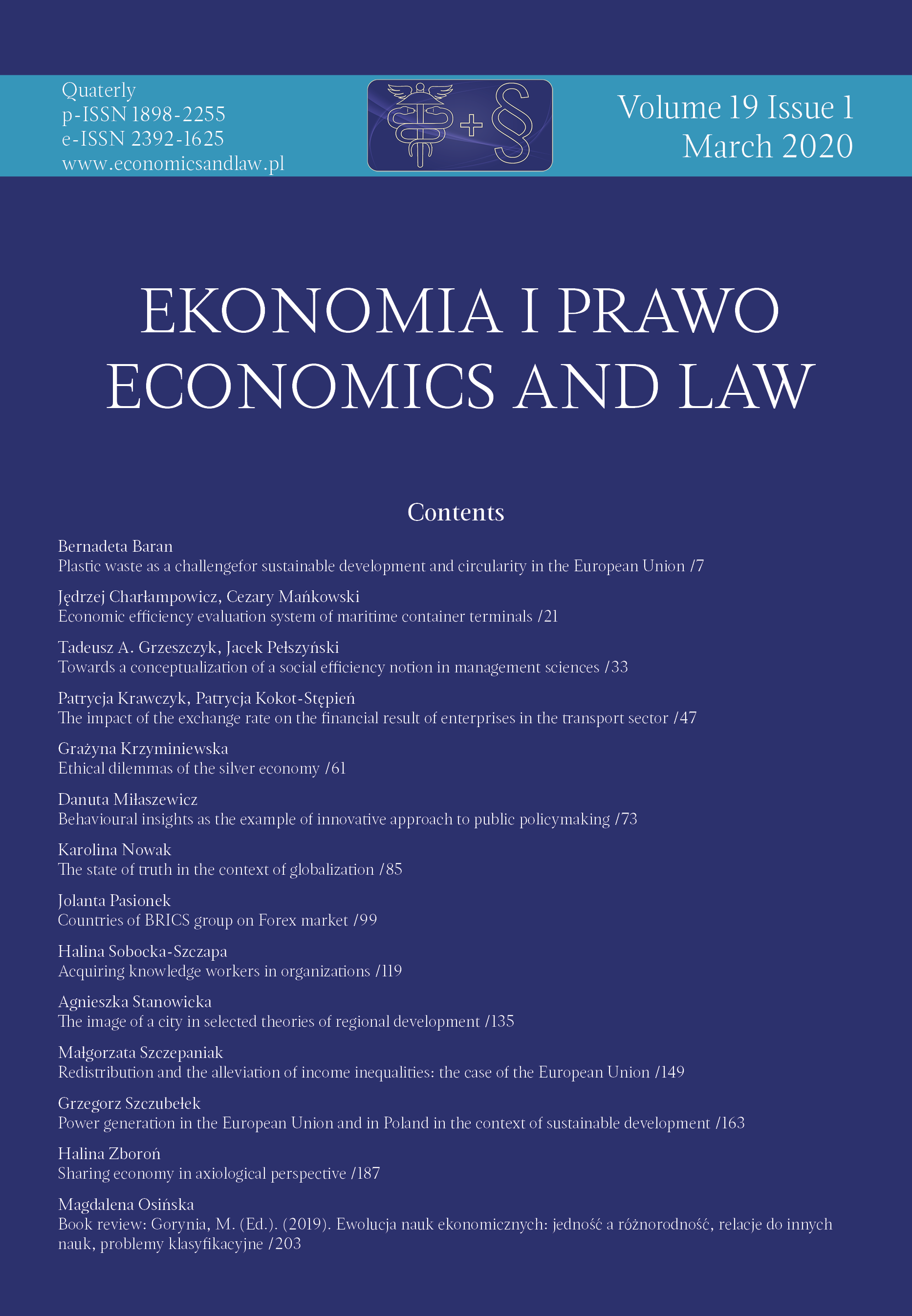Ethical dilemmas of the silver economy
DOI:
https://doi.org/10.12775/EiP.2020.005Keywords
ethics, ethical dilemmas silver economy, ageing populationAbstract
Motivation: The silver economy means the existing and emerging economic opportunities caused by the ageing population. It creates a number of dilemmas encourages its broader analysis in view of the emerging ethical problems.
Aim: The aim of the article is to present ethical problems arising in connection with the aging of the population. The article hypothesizes that the development of individual activities undertaken in the field of the so-called ‘silver economy’ repeatedly violates the ethical rules of social relations, which may contribute to reducing the quality of life and social status of senior citizens. The implementation of the silver economy, related to the rejection of biases and stereotypes concerning the elderly, is the essence of the problem analysis. The ethical dilemmas mentioned in the title indicate the need to reflect on the problem, whose solution presents a difficult choice between two equally important perspectives: the personalized, pro-senior citizen approach; and a pragmatic approach to alleviating the impacts of an ageing society on society overall. The problem is considered with respect to various fields of activity of the silver economy, concentrated around the silver industry, social innovation and gerontechnology.
Results: The development of the silver economy will be one of the expected megatrends in the economy. The activities of silver industries, social innovation and gerontechnology are a condition to increase the level and quality of life of the older generation. The silver economy is a major stimulus for development, provided that it is based on ethical principles that promote social and economic inclusion, as well as on counteracting the negative consequences of stereotyping, ageism and social exclusion. The analyzes carried out indicate that the ethical approach to the development of the ‘silver economy’ has not been sufficiently considered to date.
References
European Commission. (2009). Communication from the Commission to the European Parliament, the Council, the European Economic and Social Committee and the Committee of the regions: dealing with the impact of an ageing population in the EU (2009 Ageing Report) (COM(2009) 180).
United Nations. (2017). World population ageing 2017. Retrieved 10.07.2018 from http://www.un.org.
Deloitte. (2018) 6 megatrendów będzie miało największy wpływ na kształt globalnej gospodarki. Retrieved 18.10. 2018 from https://www2.deloitte.com.
Enste, P., Naegele, G., & Leve, V. (2008). The discovery and development of the silver market in Germany. In F. Kohlbacher, & C. Herstatt (Eds.), The silver market phenomenon: business opportunities in an era of demographic change. Berlin: Springer. doi:10.1007/978-3-540-75331-5_22.
Klimczuk, A. (2016). ‘Silver economy’ models in the European Union in the comparative approach: an attempt to introduce discussion. Problemy Zarządzania, 59(2/1). doi:10.7172/1644-9584.59.3.
Krzyminiewska, G., & Pondel, H. (2018). Care farms in the strategy of the multifunctional development of rural areas. In Jedlicka P., Maresova P., & Soukal, I. (Eds.), Hradec Economic Days 2018. Kralove: University of Hradec Kralove.
OECD, University of Oxford, & Global Coalition for Ageing. (2014). The silver economy as a pathway for growth: insights from the OECD–GCOA expert consultation. Retrieved 10.07.2018 from https://www.oecd.org.
O’Sullivan, C., Mulgan, G., & Vasconcelos, D. (2010). Innovating better ways of living in later life: context, examples and opportunities. The Young Foundation Working Paper, May.
Schilling, C. (2010). Socjologia ciała. Warszawa: PWN.
Turek, K. (2015). Znaczenie wieku na rynku pracy: model relacji pomiędzy pracownikiem i pracodawcą. Studia Socjologiczne, 2(217).
Zsarnoczky, M. (2016a). Innovation challenges of the silver economy. Vadyba Journal of Management, 1(28).
Zsarnoczky, M. (2016b). The new hope for the EU: silver economy. In W. Miczorek (Ed.), Building bridges: cities and regions in a transnational world. Graz: RSA.
Downloads
Published
How to Cite
Issue
Section
Stats
Number of views and downloads: 1483
Number of citations: 0
